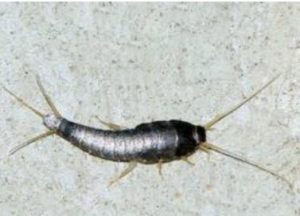Is it GRAS?

“GRAS” is an acronym for the phrase Generally Recognized As Safe. Under the Federal Food, Drug, and Cosmetic Act (the Act), any substance that is intentionally added to food is a food additive, that is subject to premarket review and approval by FDA, unless the substance is generally recognized, among qualified experts, as having been adequately shown to be safe under the conditions of its intended use, or unless the use of the substance is otherwise excepted from the definition of a food additive.
General recognition of safety through scientific procedures is based upon the application of generally available and accepted scientific data, information, or methods, which ordinarily are published, as well as the application of scientific principles, and may be corroborated by the application of unpublished scientific data, information, or methods.
Materials such as salt, invert sugar, Sodium bicarbonate, Guar Gum, and other common ingredients and additives in food are considered GRAS. The FDA offers a free resource, the GRAS Database, to allow manufacturers and consumers access to the information. The GRAS Database is a useful tool for researching associated hazards and justification for excluding common hazards while completing a hazard analysis.
(More information available from the FDA Website)
Submitted by: Rich Gibson ACE, CFSQA
The Silverfish

Order: Zygentoma Family: Lepismatidae Genus: Lepisma Species: L. saccharinum
The Lepisma saccharinum (Silverfish) is a species of small, primitive, wingless insect in the order Zygentoma (formerly Thysanura). Its common name derives from the insect’s silvery light grey color, combined with the fish-like appearance of its movements.
The silverfish is a nocturnal insect typically 13–25 mm (0.5–1.0 in) long. Its abdomen tapers at the end, giving it a fish-like appearance.[3] The newly hatched are whitish, but develop a greyish hue and metallic shine as they get older.
The most obvious sign of a silverfish bug is you will see them. This insect rarely leaves evidence of its presence. Most often, this pest will be lingering in the dark near a source of moisture, such as a sink, faucet, toilet or in a boiler room. When the lights come on, these pests will freeze for a moment and then dash away to hide. Silverfish can hide in very thin cracks and crevices.
The most effective way to contain a silverfish population is to severely cut their access to moisture. Sources of moisture should be found and corrected; seal up leaky pipes and dry out consistently wet areas with air conditioners, heaters, fans or dehumidifiers.
Crack and crevice treatments using an approved and properly labeled pesticide dust, aerosol, or other residual, can be effective in reducing the silverfish population.
Submitted by: Rich Gibson, ACE, CFSQA
Time Sensitive

In May 2021, an ice cream manufacturer was approached by a major club store in hopes of introducing their unique ice cream products in a new store opening in the region. Prior to seeing the ice cream in the store’s freezer, the manufacturer was first required to pass a Good Manufacturing Practices (GMP) audit geared specifically for that retailer. The client was given thirty days to get this accomplished, a daunting feat.
Comprehensive Food Safety (CFS) was contacted by the manufacturer to develop an in-depth, robust GMP-compliant program that would not only satisfy the requirements of the new client, and meet regulatory compliance standards, but also position themselves to successfully pass the food safety audit. The process of creating and implementing a GMP compliant program typically has a duration of three and five months.
Using the extensive capabilities within the CFS team, Comprehensive Food Safety were able to complete the GMP document creation, conduct the required awareness trainings, and help the client schedule a GMP audit with a major certification body, all within thirty days. The audit was conducted, and the client achieved a near perfect score! This heroic effort was made possible by our client’s commitment to seeing the project though, as well as the vast resources CFS possesses and the ability to complete a complex project in a very short timeframe.
This client, with whom CFS has no prior contact with, placed their trust in us to help them through a very complex and stressful time. The CFS team was able to come together and work as one unit to help the client achieve a level of food safety that satisfied this major retailer, while doing so in very short order.
Well done Team CFS!!
- Lessons Learned:
• Senior Management Commitment comes first
• Teamwork Makes the Dream Work
• Systematic approaches are key
Submitted by: Joe Laino
Sr. Food Safety Consultant/ Compliance Manager
Comprehensive Food Safety






